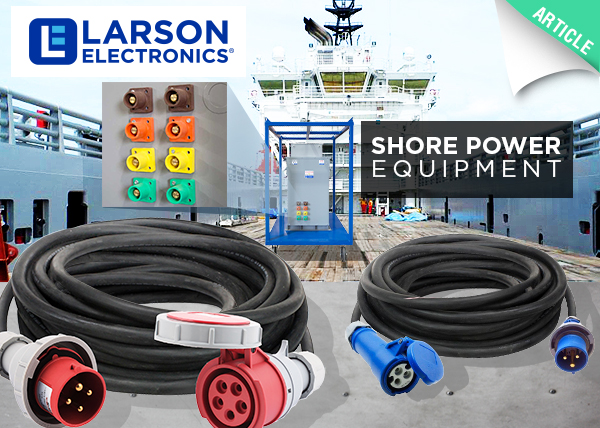
“Shore power,” or shore supply, is a form of electrical power generally used for ships and boats that are at berth on the dock. While the ship’s main and auxiliary engines are shut down, a shore power connection allows AC power to top up batteries, or run any AC powered items on the boat such as microwaves, power tools, TVs, or hairdryers.
This land-based power can be from the grid if it’s available, or a remote generator that may be powered by solar energy, or diesel fuel, and is connected to the boat via marine grade extension cords.
The main reason for using shore power is that is saves fuel consumption by shutting down engines, and eliminates air pollution that is associated with the consumption of that fuel source. Additionally, giving the engines and generators a break can aid in their maintenance and longevity.
The need for shore power started in California, where there was a growing public demand for reducing air pollutants caused by diesel-fueled engines – this eventually led the California Air Resources Board to adopt a regulation in 2008, requiring ocean-going vessels to reduce their air pollution.
While shore power is most often associated with marine environments, it can also be used for aircrafts to sustain interior lighting and ventilation while docked, or land-based vehicles such as heavy-duty military trucks, long-haul trucks, or large buses – known as Truck Stop Electrification. Plugging into grid power when parked allows idle reduction, which saves fuel, reduces maintenance costs, extends the vehicle’s life, and greatly reduces the vehicle’s carbon footprint.
Using shore power is fairly simple, but it must be done correctly, since the improper use of power can be extremely dangerous. Here is a list of precautions to take when using shore power on the boat, vehicle or aircraft.
- Never use a regular “outdoor use” only extension cord, which may deteriorate, or over-heat causing electrical shock or fires. All extension cords MUST be rated specifically for marine use, or even better “UL-Marine,” or military grade “Milspec,” to ensure they are safe and protected from the dangers of marine environments.
- Extension cords MUST be locking types with male and female connectors. When connecting the extension cord to the power source, make absolutely sure it is fully locked, or it may not function properly and become a fire hazard.
- Both male and female connectors MUST have weatherproof seals; the male must also have weatherproof boots, and the female must have a locking ring.
- Before connecting or disconnecting the extension cord, make sure the main circuit breaker is turned OFF. Connect the female end to the vessel or vehicle first, then the male end to the power source.
- ALWAYS keep the cord plugged in on both sides, or unplugged from both sides to avoid electrical shock, or the cord falling into the water. If the cord falls into the water it must be sprayed with fresh water immediately, completely dried, and the male and female ends must be sprayed with a moisture displacement product prior to re-using.
- When hanging up the extension cords keep slack in the coil and let it hang, or lay out loosely.
- Spend time periodically to check the power cords for cracks, cuts, abrasions, bent plugs, brown or black discoloration on male blades, erosion of any part of the cord, and faulty locking rings.

